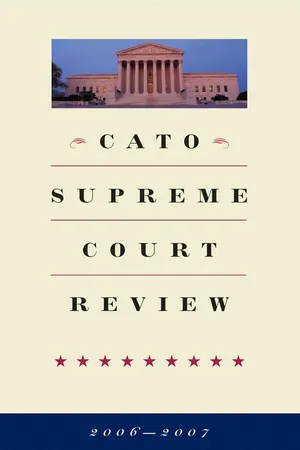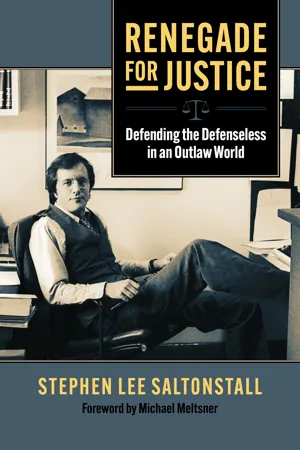Politics & International Relations
Morse v Frederick
"Morse v Frederick" was a US Supreme Court case that dealt with the issue of free speech in schools. The court ruled that schools have the right to limit student speech that promotes illegal drug use, even if the speech occurs off-campus. This case established the "Bong Hits 4 Jesus" precedent, which allows schools to regulate student speech that promotes illegal activity.
Written by Perlego with AI-assistance
Related key terms
Related key terms
1 of 4
Related key terms
1 of 3
3 Key excerpts on "Morse v Frederick"
- eBook - ePub
Rhetoric and Discourse in Supreme Court Oral Arguments
Sensemaking in Judicial Decisions
- Ryan Malphurs(Author)
- 2013(Publication Date)
- Routledge(Publisher)
Morse v. Frederick because it serves as an ideal case that foregrounds both sensemaking and strategic actor judicial behavior.Morse v. Frederick was a highly publicized 2007 case in which student Joseph Frederick claimed First Amendment protection for his sign that read “Bong Hits 4 Jesus.” Frederick had skipped school the day that the Olympic torch was scheduled to pass his high school, and had planned to hold up a banner reading “Bong Hits 4 Jesus” to attract the attention of the passing television cameras.2 Frederick unfurled his large banner across the street from where his fellow high school students were gathering to watch the passing of the Olympic torch. It is important for readers to bear in mind that Frederick had taken deliberate steps to avoid the reach of school administrators by not attending school that day, and by not standing on school property. But by standing across from the high school with the banner directed towards students, he clearly was taunting school administrators, believing that he was out of their reach.Principal Deborah Morse believed the sign promoted the use of illegal drugs and directed Frederick to take down the sign. When Frederick refused to take the sign down, Morse confiscated it and later suspended him. Frederick appealed the suspension to the school’s superintendent, who upheld his suspension. In 2007 the Supreme Court handed down a 5–4 ruling in favor of Morse, determining that schools have an interest in safeguarding students from speech that can be reasonably interpreted to encourage illegal drug use. Chief Justice Roberts, and Justices Kennedy, Scalia, Thomas, and Alito voted in favor of the petitioner principal Deborah Morse, while Justices Stevens, Souter, Ginsburg, and Breyer voted for the respondent Joseph Frederick. Kenneth Starr and Edwin Kneedler (Deputy Solicitor General) represented Deborah Morse, and Douglas Mertz represented Joseph Frederick. Topically, the case provides an interesting and controversial issue of First Amendment rights from which to gauge the justices’ behavior. Oral argument in the case was vigorous and nearly all the justices were involved in questioning at some stage. I have repeated some of the methodological approaches listed in Chapter 4 - eBook - ePub
- Mark K. Moller(Author)
- 2007(Publication Date)
- Cato Institute(Publisher)
BONG HiTS 4 JESUS: The First Amendment Takes a Hit
Hans Bader*I. Introduction
In 1969, the Supreme Court observed that students do “not shed their constitutional rights to freedom of speech or expression at the schoolhouse gate.”1 But thirty eight years later, the Court gave school officials authority to ban speech even beyond the schoolhouse gate in Morse v. Frederick.2InMorse, the Supreme Court held that a school may restrict student speech it reasonably views as promoting illegal drug use.3 Creating a new exception to free speech in schools, the Court upheld disciplinary action against Joseph Frederick, a high school senior who was suspended after he displayed a banner reading “BONG HiTS 4 JESUS” across the street from his school in Juneau, Alaska, during the Winter Olympics Torch Relay. The Court for the first time countenanced viewpoint-based restrictions on speech that would clearly be protected from punishment if the speech occurred among citizens in society at large.The Court failed to provide any clear test for when to carve out exceptions to free speech in school, beyond stating the general premise that school officials have broader power over student speech than the government has over speech in general. Moreover, in its zeal to give the government a win in the “War on Drugs,” the Court upheld censorship of speech that posed little risk of causing drug use, and decided the case in a way that showed inadequate respect for procedural safeguards mandated by federal court rules. The Court’s decision did nothing to make schools safer or more orderly, since it is other legal challenges, not the First Amendment, that have undermined school discipline.There were two bright spots for free speech advocates. One was the justices’ recognition that political speech advocating the legalization of drugs could not be banned under their ruling. Another was the Court’s implicit rejection of some lower court rulings that students’ speech must be on matter of “public concern” to enjoy any protection. - eBook - ePub
Renegade for Justice
Defending the Defenseless in an Outlaw World
- Stephen Saltonstall, Michael Meltsner(Authors)
- 2023(Publication Date)
- University Press of Kansas(Publisher)
Morse v. Frederick .While standing across the street from his Juneau high school during a school-sanctioned parade, student Joseph Frederick, along with some classmates, held up a large banner emblazoned with the slogan “BONG HiTS 4 JESUS.” When a school administrator ordered the students to pull down the banner, only Fredrick refused. The school punished Frederick by suspending him for ten days.In an opinion by Chief Justice John G. Roberts, the Supreme Court affirmed the right of the school administration to impose that discipline. The Supreme Court’s opinion cited the Guiles decision with approval, noting that the Second Circuit had taken pains to contrast Zachary’s T-shirt with the “Bong Hits” emblem: one opposed drug abuse, while the other, in the words of Judge Cardamone, was “a clearly pro-drug banner.”Chief Justice Roberts also adopted the same method of analysis used by the Second Circuit in Guiles . He first determined that neither Kuhlmeier nor Fraser , which set forth the exceptions to the rule of Tinker , applied to the facts.Although the parade in Juneau was a school-sponsored event, Justice Roberts found that no viewer reasonably could interpret a sign endorsing the marijuana high-inducing inhalation of “Bong Hits” as carrying the school’s endorsement, unlike articles in the student newspaper in Kuhlmeier . So that case isn’t applicable.Neither is Fraser on point, Chief Justice Roberts continued, because the slogan “BONG HiTS FOR JESUS” isn’t “plainly offensive” in a constitutional sense. Echoing Judge Cardamone’s view in Guiles on the limited connotation of the term “plainly offensive,” Justice Roberts said: “We think that stretches Fraser
Index pages curate the most relevant extracts from our library of academic textbooks. They’ve been created using an in-house natural language model (NLM), each adding context and meaning to key research topics.
Explore more topic indexes
Explore more topic indexes
1 of 6
Explore more topic indexes
1 of 4


